Microsoft Surface Pro 2 Review
by Anand Lal Shimpi on October 21, 2013 12:01 AM EST- Posted in
- Tablets
- Microsoft
- Mobile
- Surface
- Surface Pro 2
Display
Like Surface 2, Surface Pro 2 ships with 150% DPI scaling enabled for classic desktop applications. Unfortunately even under Windows 8.1 there are a lot of issues with DPI scaling in 3rd party applications and touch targets. Chrome for example is mostly unusable as a touch browser in classic mode.
There’s not much difference between the new 1080p panel in Surface 2 and what’s in Surface Pro 2. Both feature a laminated cover glass and the same increase in color gamut. The end result is a big improvement over the previous generation, but not quite up to the level of color accuracy we’ve come to expect from cheaper tablets.
Surface Pro 2's display does get substantially brighter than the panel in my Surface 2 review sample. One thing I don't have a good feel for is just how much variation there is between panel suppliers into the Surface lines.
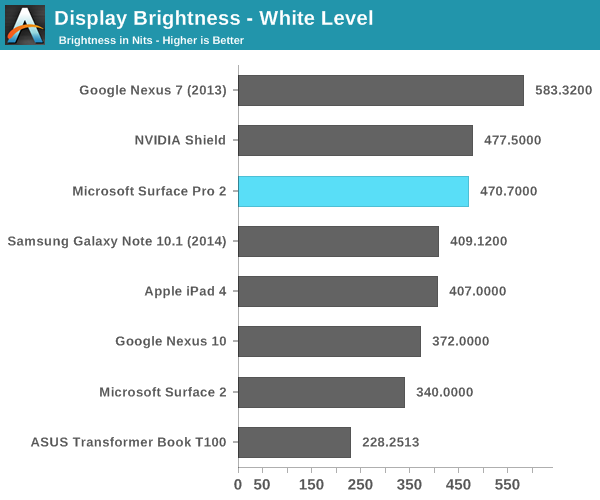
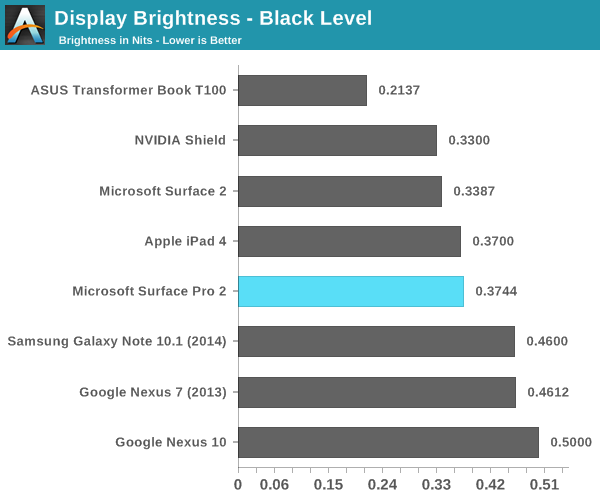
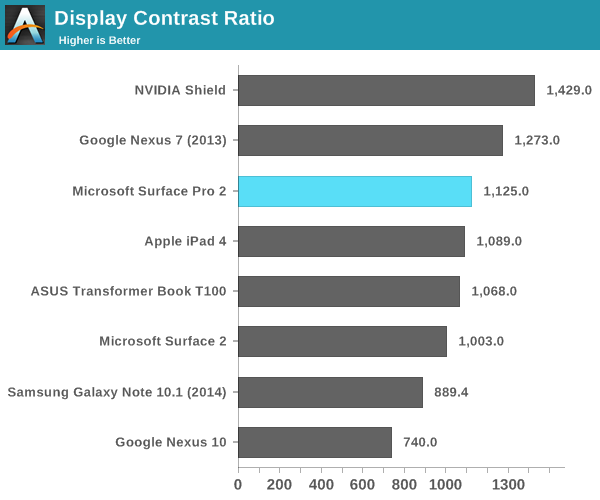
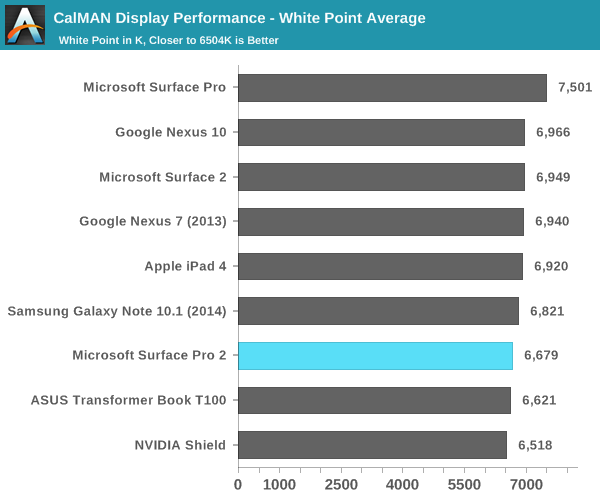
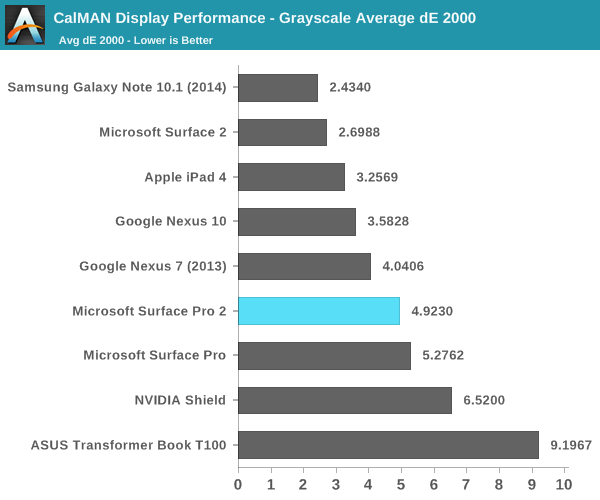
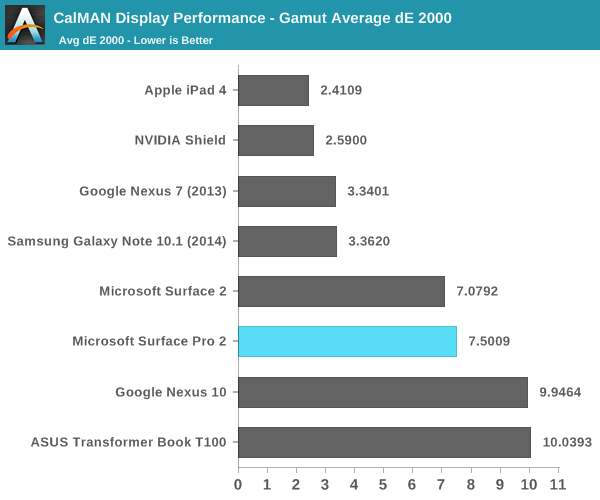



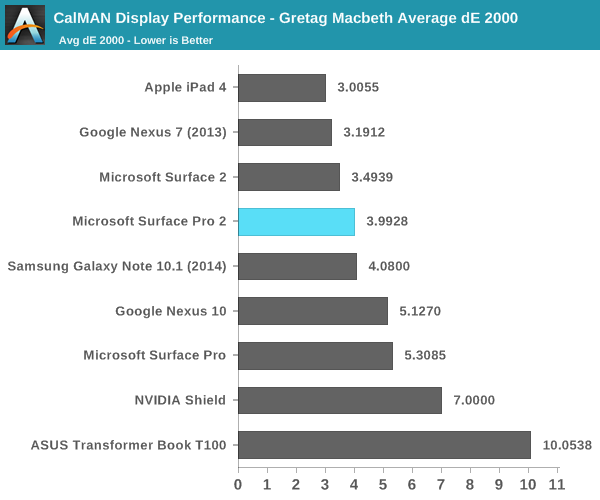

It really is a very good display, it just could be better.













277 Comments
View All Comments
beggerking@yahoo.com - Monday, October 21, 2013 - link
ALL other sites reports 8+ hrs.even my Surface Pro 1 last 5-6 hrs
Drumsticks - Monday, October 21, 2013 - link
Regarding IE11 and chrome, is it possible to test or provide your opinion on power consumption between the two browsers? In the least scientifically reproducable scenario possible, BatteryBar reads a consistent 4-6W less power used for IE11 than chrome to me (for example when viewing a live stream)I can idle around 16W (Samsung needs to release drivers for 8.1, it seriously crushed my battery life), but when running three or so tabs on ie11 and a live stream, I pull average 22W versus like 26-28 on chrome. This could be pretty significant for battery life... Has anybody else seen something similar?
B3an - Monday, October 21, 2013 - link
You make a good point. I'd like to know what browser Anand used for the wifi battery tests...Anand Lal Shimpi - Monday, October 21, 2013 - link
I used IE11 for all of the Surface battery life tests.michaelljones - Monday, October 21, 2013 - link
I have seen similar here on our gen 1 Pro device. I think it has to do with a couple of things.1. Chrome now is a memory hog. It has a MUCH higher base resource requirement than IE or FF. I don't know why, but it instantly consumes a huge amount of RAM on every machine I use it on. Even on Win 7 it now pulls down about 300MB of memory right after a clean launch.
2. Chrome's sandboxing launches more instances of Chrome than competing browsers. Even on my Windows 7 machine, Chrome now has 6 independent instances with no plugins running (i.e. no background Chrome apps).
3. I think IE currently has a better optimized video playback backend that allows your streams to be offloaded more to the GPU than the CPU. Chrome is getting there, but IE is still much better coupled in this way. (it probably also has something to do with IE only being on one platform, vice Chrome on many more, but that singleness of purpose allows for better optimization).
basroil - Monday, October 21, 2013 - link
"rest of the world have moved on to things like 802.11ac and PCIe based SSDs. Microsoft appears to be on a slightly strange update cadence"Well, both 802.11ac and PCIe SSDs are not very power efficient currently, especially since the chipset already includes sata. They chose lpddr3 and a 4200U for power reasons, rather than faster memory and a i7 4650U, so i'm sure they had thought about it before staying with slower parts
IntelUser2000 - Monday, October 21, 2013 - link
What are you talking about? 1600 is the fastest you can get, and LPDDR3 is available in DDR3-1600.I agree with the other poster saying its deliberately gimped to "boost" RT.
Kristian Vättö - Monday, October 21, 2013 - link
True PCIe SSDs (i.e. NVMe based) are actually more power efficient than SATA designs because the NVMe protocol is much more efficient compared to SCSI.dwade123 - Monday, October 21, 2013 - link
I just wish Apple would make OSX tablets with retina display. They always use displays that's superior to everyone else. Dat iPad display is unbeatable. Workstation class for consumer device.sweenish - Monday, October 21, 2013 - link
Depends on the test. It lost more than one to the Surface Pro 2 and 2013 Nexus 7. Their calibration is top notch, though.